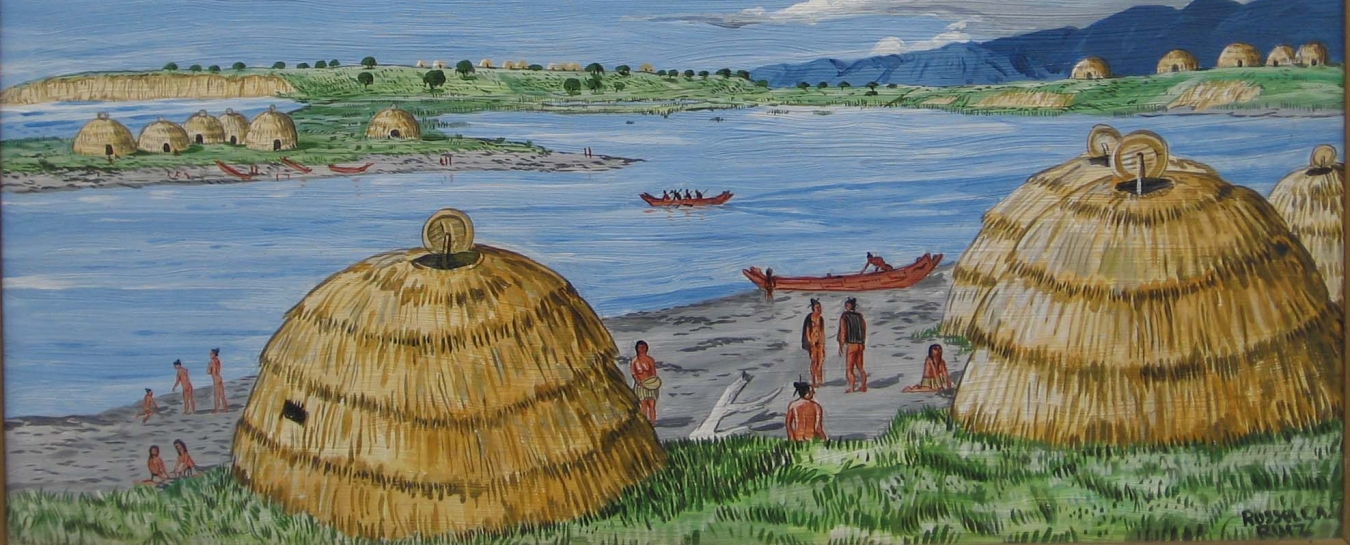Anthropology
Related: About this forumChumash Indians were using highly worked shell beads as currency 2,000 years ago
Date:
January 29, 2021
Source:
University of California - Santa Barbara
As one of the most experienced archaeologists studying California's Native Americans, Lynn Gamble(link is external) knew the Chumash Indians had been using shell beads as money for at least 800 years.
But an exhaustive review of some of the shell bead record led the UC Santa Barbara professor emerita of anthropology to an astonishing conclusion: The hunter-gatherers centered on the Southcentral Coast of Santa Barbara were using highly worked shells as currency as long as 2,000 years ago.
"If the Chumash were using beads as money 2,000 years ago," Gamble said, "this changes our thinking of hunter-gatherers and sociopolitical and economic complexity. This may be the first example of the use of money anywhere in the Americas at this time."
Although Gamble has been studying California's indigenous people since the late 1970s, the inspiration for her research on shell bead money came from far afield: the University of Tübingen in Germany. At a symposium there some years ago, most of the presenters discussed coins and other non-shell forms of money. Some, she said, were surprised by the assumptions of California archaeologists about what constituted money.
More:
https://www.sciencedaily.com/releases/2021/01/210129120245.htm
~ ~ ~
WEDNESDAY, JANUARY 23, 2013
The Chumash and the Tomol
A tomol replica built in 1976. Source: Chumash Maritime Organization. (Click any image to enlarge.)
The Chumash were a North American maritime culture, originally based on the mainland and Channel Islands on both sides of the Santa Barbara Channel in California. (I use the past tense in describing the culture as maritime for, while many Chumash people still remain in the area, their culture is no longer defined by maritime activities.) The area is particularly rich in marine resources, and the Chumash used at least three kinds of boats to exploit them.
Probably the first to appear was the tule reed "balsa," a raft of bundled reeds. It seems likely that tule balsas provided the means by which the islands were settled some 12,000 years ago, long before Chumash culture arose. Bundle boats are among the simplest of all watercraft to produce, and the main building materials were readily available in large quantities on the mainland shores of the Santa Barbara Channel, and in smaller amounts on the islands. In addition to large beds of reeds, naturally-occurring tar, in the form of asphaltum, is found in the area, and the Chumash used this to coat the reed bundles and increase their water resistance.
Even with a tar coating, tule reeds are a short-lived commodity, so hard evidence for the use of such craft so long ago is hard to come by. But the early occupation of the islands, and evidence of cross-channel trade that followed it but predates the probable development of other boat types, indicate that some sort of watercraft was in regular use, as do excavations of dwelling sites that indicate that the Chumash diet included marine animals that would have been difficult to obtain without the use of a boat.
Tule reed balsas were still in use at the beginning of the historic era (around the middle of the 16th century AD), when the Spanish first explored and later colonized the area. They were about 2.5 meters LOA and capable of carrying two or three people. They were used primarily for nearshore and coastal fishing and transport, and occasionally for cross-channel crossings. The Chumash also had dugout canoes, but confined them to nearshore and coastal use.
More:
http://indigenousboats.blogspot.com/2013/01/the-chumash-and-tomol.html








iemitsu
(3,890 posts)wnylib
(25,351 posts)used shell beads as currency, too. I don't have any dates for how far back that currency use goes. The early British settlers at Plymouth and Massachusetts Bay also used shell beads as currency when making deals with the Native people.
Among the tribal nations of the Iroquois Confederacy, shell beads (wampum) were strung into images to represent political agreements with each other, and later, to commemorate treaties with the colonies. Individuals who made deals with each other also used strings of colored shell beads to seal their deals, with a witness, and regarded the bead string the way we would regard a contract.
The unifying agreement between the 5 nations (later, 6) of the Iroquois Confederacy, known as the Great Law of Peace, is "recorded" in a wampum belt that symbolizes the member nations with a sacred pine in the center representing the location of the Onondaga nation (keeper of the council fire) where delegates met for confederacy business.
https://en.m.wikipedia.org/wiki/Great_Law_of_Peace
ON EDIT: Scroll down for an image of the wampum belt that symbolizes the foundation of the confederacy. It served as a memory aid for recitation of the foundation story during gatherings of elected delegates from each tribal nation member - a constiturion.